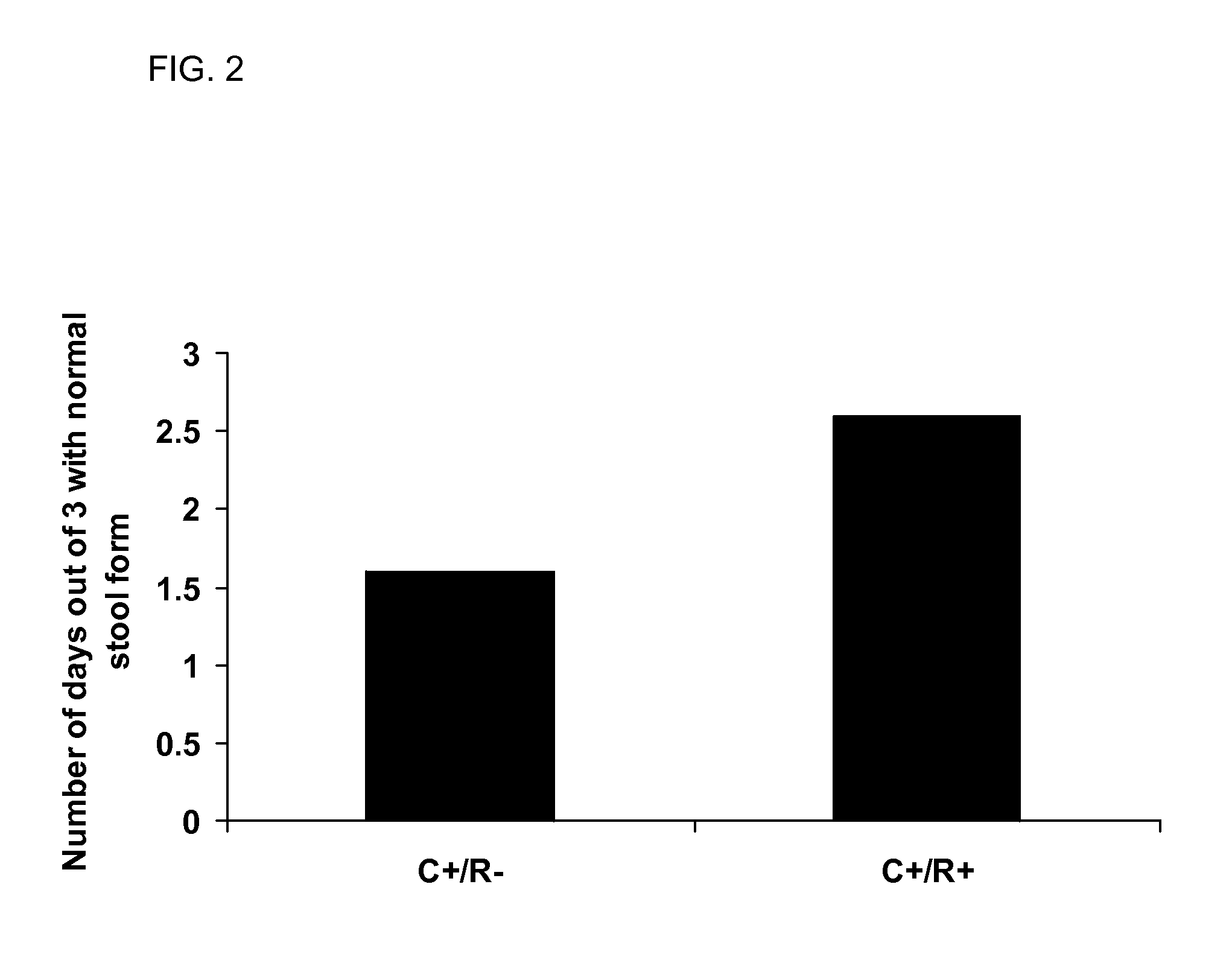Antibiotic therapy to reduce the likelihood of developing post-infectious irritable bowel syndrome
- Summary
- Abstract
- Description
- Claims
- Application Information
AI Technical Summary
Benefits of technology
Problems solved by technology
Method used
Image
Examples
example 1
Animal Preparation and Gavage
[0062]Male Sprague-Dawley rats (n=108) (200g) were quarantined for 10 days. Subsequently, fresh stool was collected by stroking the anus. Stool was cultured for C. jejuni on Campylobacter agar (BD Diagnostics, Franklin Lakes, N.J.). This was conducted to confirm the absence of infection or colonization of animals with C. jejuni prior to starting the study.
[0063]Once it was confirmed that the rats did not harbor C. jejuni, the rats were divided into two groups. In the first group (n=54), the rats were gavaged with 1 mL of a 5% solution of bicarbonate. This was given to acutely reduce gastric acidity. Subsequently, the rats were gavaged with a 1 mL suspension of 108 cfu / mL C. jejuni 81-176 in Campylobacter broth (C+ / R− group). In the second group (n=54), the rats were gavaged with a 1 mL solution of rifaximin (200 mg) (C+ / R+ group). The following day, the C+ / R+ group received 3 sequential gavages. The first was another 1 mL dose of rifaximin. One hour late...
example 2
[0064]Tracking the Acute Colonization with C. jejuni
[0065]After completion of the gavage, fresh stool was collected daily from all rats (both groups) and cultured for the presence of C. jejuni on Campylobacter agar. The number of days to first detectable C. jejuni in stool was recorded. Once colonization was noted, daily stool was cultured until 2 consecutive days with no detectable C. jejuni was observed. This was recorded as the time to C. jejuni clearance.
example 3
Determination of a Post-Infectious Phenotype
[0066]After C. jejuni clearance was determined, the rats were housed for an additional 3 months (90 days). At 90 days, fresh stool was collected for 3 consecutive days. The stool was graded for consistency. To do this, a modified Bristol-like stool score was used. In this score, stool was graded as normal (1), soft and poorly formed (2), or watery (3). The stool was then weighed and air dried for 5 days followed by oven drying at 160° C. for 1 hour. The stool was reweighed and a % stool wet weight was determined. After completion of the study, the rats were euthanized by CO2 asphyxiation, weighed, and a laparotomy was performed. During the laparotomy, predefined segments of duodenum, jejunum, ileum, left colon, and rectum were resected, as previously described (12). Subsequently, the contents of each segment were cultured for the presence of C. jejuni.
PUM
| Property | Measurement | Unit |
|---|---|---|
| Bioabsorbable | aaaaa | aaaaa |
Abstract
Description
Claims
Application Information
 Login to View More
Login to View More - R&D Engineer
- R&D Manager
- IP Professional
- Industry Leading Data Capabilities
- Powerful AI technology
- Patent DNA Extraction
Browse by: Latest US Patents, China's latest patents, Technical Efficacy Thesaurus, Application Domain, Technology Topic, Popular Technical Reports.
© 2024 PatSnap. All rights reserved.Legal|Privacy policy|Modern Slavery Act Transparency Statement|Sitemap|About US| Contact US: help@patsnap.com









